Yangzhou Dream in the twelfth lunar month
Yangzhou, known as Guangling and Jiangdu in ancient times, was founded in 486 BC. At that time, it was equivalent to a province, not a city, now. Yangzhou City is named after "Yangzhou", one of the nine states in "Yu Gong", meaning "there is a lot of water in the state boundary, and the waves are surging." According to various classics before the Six Dynasties, there were 39 prefectures and 196 counties in the ancient Yangzhou area. Although this Yangzhou includes Yangzhou after the Sui Dynasty (present-day Yangzhou), it cannot be confused with the prosperous Yangzhou City after the Sui Dynasty (present-day Yangzhou).
During the Three Kingdoms period, Wei and Wu were at war, and Guangling became a military center in the Jianghuai area. During the Northern Zhou Dynasty, Guangling was renamed "Wuzhou". In 589 AD, the Sui Dynasty unified China, and Emperor Wen of the Sui Dynasty changed "Wuzhou" to "Yangzhou".
At that time, the poem immortal's "Send Meng Haoran to Guangling","The old friend leaves the Yellow Crane Tower in the West, and the fireworks fall under Yangzhou in March" became the most famous advertising line in Yangzhou in the past thousand years; while Shi Zonggao's "A hundred thousand yuan is wrapped around his waist, riding a crane to rise up the state" allows us to appreciate the prosperity of ancient Yangzhou City through words thousands of years later. The so-called "success is also a canal, failure is also a canal." In history, Yangzhou City experienced three prosperous periods: the Han, Sui, Tang, and Ming and Qing Dynasties. After reaching its peak in the Qing Dynasty, Kang, Yong and Qian Dynasties, due to river silt and other reasons, during the Jiaqing period,"buildings were destroyed and flowers and trees withered" The scene eventually declined rapidly in the late Qing Dynasty and became a ray of brilliance in historical memory.
Maybe you remember its prosperity when merchants gathered, but forget the miserable situation when 800,000 people were slaughtered on the Tenth Day of Yangzhou more than 300 years ago and the blood flowed into blood; maybe you remember its poetic life, but forget the golden sword and iron horse he once experienced, and don't know the heroic situation of resisting the Qing Dynasty in those years. But maybe this is Yangzhou, this is the Yangzhou that the world remembers.
The saying,"Fireworks fall under Yangzhou in March" has become a sacred place that many Chinese people yearn for in March. Since you can't go to the ancient city of Yanyu in the poetic realm at the most beautiful time in your heart, let's experience Guangling, which has few tourists, in the winter of the twelfth lunar month.
Yangzhou Taizhou Airport is more than 40 kilometers away from the city and there are very few flights. Therefore, most people will not choose Taizhou Airport first when going to Yangzhou. Nanjing is about 100 kilometers away from Yangzhou and can be reached in two hours by train. You can take a direct long-distance bus to Yangzhou at the entrance of Nanjing Lukou Airport, which takes less than two hours. Therefore, the most convenient way is to transfer at Lukou Airport.


After about two hours of journey, the car stopped at the terminal point-the parking lot of Yangzhou New Century Hotel, and took a taxi at the door to reach the residence. Along the way, you can see few cars and pedestrians in the urban area. An ancient city that still retains its ancient atmosphere is presented in front of you. Even though the road conditions are very good, there are no traffic jams and not many traffic lights waiting, the driver is not driving fast. The slow-paced life of the people in the ancient city makes your mind impetuous.
The accommodation I booked was a B & B. It was renovated from an old house and had a three-story building. It is located in Guangchumen Community. It takes you to walk about 40 meters to Guoqing Road. Go south along Guoqing Road for more than 200 meters to get to Guandong Street. Entrance.

In mid-December, the ancient city has entered the severe winter season. The rainy and humid Yangtze River Basin feels colder when the temperature is low. I had put on down jackets at Nanjing Airport, but after getting off the bus in Yangzhou, the ancient city in the misty rain was bitterly cold. Coupled with the scarf and hat, I still didn't feel warm enough. It was nearly 2 o'clock in the afternoon. After a short stop from the boat, I went out to find food.
The Jiangjia Dumpling and Noodle Restaurant across Guandong Street is very famous. Since it was past meal time, there were not many diners inside. He and his classmates ordered shrimp wontons, large row noodles and crab roe soup dumplings. The portions were full. After eating the hot soup, I finally felt that it was not cold anymore. The soup here seems to be made with soy sauce. The taste is a little inappropriate and slightly salty. I thought the noodles here would be similar to the Olympic stove noodles in Suzhou, but they are not. The noodles here are flat and do not taste like Olympic stove noodles. Crispy feeling. Crab roe soup dumplings have a moderate taste. I order small, ordinary ones.


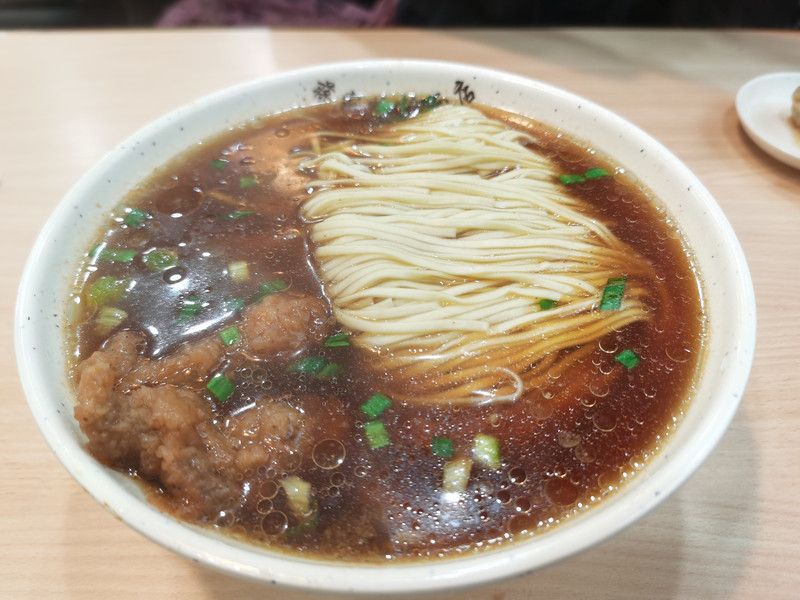
Opposite the Jiangjia Dumpling and Noodle House is the entrance of Guandong Street. Guandong Street is the most representative historical old street in Yangzhou City. It ends at the Ancient Canal in the east and Guoqing Road in the west. It has a total length of 1120 meters. It is a concentrated place for handicrafts. The street is bustling and full of businesses. There are many time-honored brands and merchants, such as Simei Sauce Garden in 1817 and Xie Fuchun Fragrant Powder Store in 1830. Geyuan, Yipu, Wang's Xiaoyuan, as well as Guangling Academy, Anding Academy, and Yidong School established earlier in Yangzhou, Wudang Palace in the Ming Dynasty and Zhunti Temple in the Ming Dynasty are all here.
The rainy winter season in Yangzhou is becoming more and more chilly. The peak tourist season has long passed, and there are few pedestrians on the road. Holding umbrellas, you can feel the atmosphere of the ancient city of Jiangbei. Although today's Guandong Street has long been reduced to a commercial street, walking is not a tourist for many years. Walking among them can always bring your thoughts to distant time and space. Nowadays, Yangzhou City is not large, and there are not many tourist attractions, and most of them are former residences of celebrities or gardens. Therefore, from the beginning, I had made up my mind not to visit too many former gardens, but only to choose famous gardens.
Geyuan is located in Guandong Street and covers an area of 2.3 hectares. It is named because of the widespread planting of green bamboos in the garden (the three-leaf method of pruning leaves in traditional Chinese painting looks like the word "ge"). At that time, it was a private garden of salt merchants in the Qing Dynasty. The garden is famous for using rocks and plants to create four-season scenery. In the 23rd year of Jiaqing of the Qing Dynasty (1818 AD), Huang Zhiyun, the chief salt merchant of Lianghuai, spent 8 million taels of silver (equivalent to one year's fiscal revenue of Jiangsu Province in that year) to build a residential garden on the basis of the "Shouzhi Garden" of the original Ming Dynasty. The owner changed several times later, and it was turned into an office space after liberation, until 1982 when it was reopened for sightseeing. Together with Beijing Summer Palace, Chengde Summer Resort and Suzhou Humble Administrator's Garden, it is known as China's Four Great Gardens.
Geyuan is famous for its stacked stone art. The rockery of bamboo shoots, lake stones, yellowstone and Xuan stones in the spring, summer, autumn and winter combines the rules of gardening with the principles of landscape painting. It has been praised by Mr. Chen Congzhou, the master of the garden, as an "isolated case in China." In 2005, Geyuan was praised as a national AAAA scenic tourist area and one of the 20 key parks in the country. In 2016, Geyuan became one of the first batch of national key flower cultural bases.


Entering from the South Gate

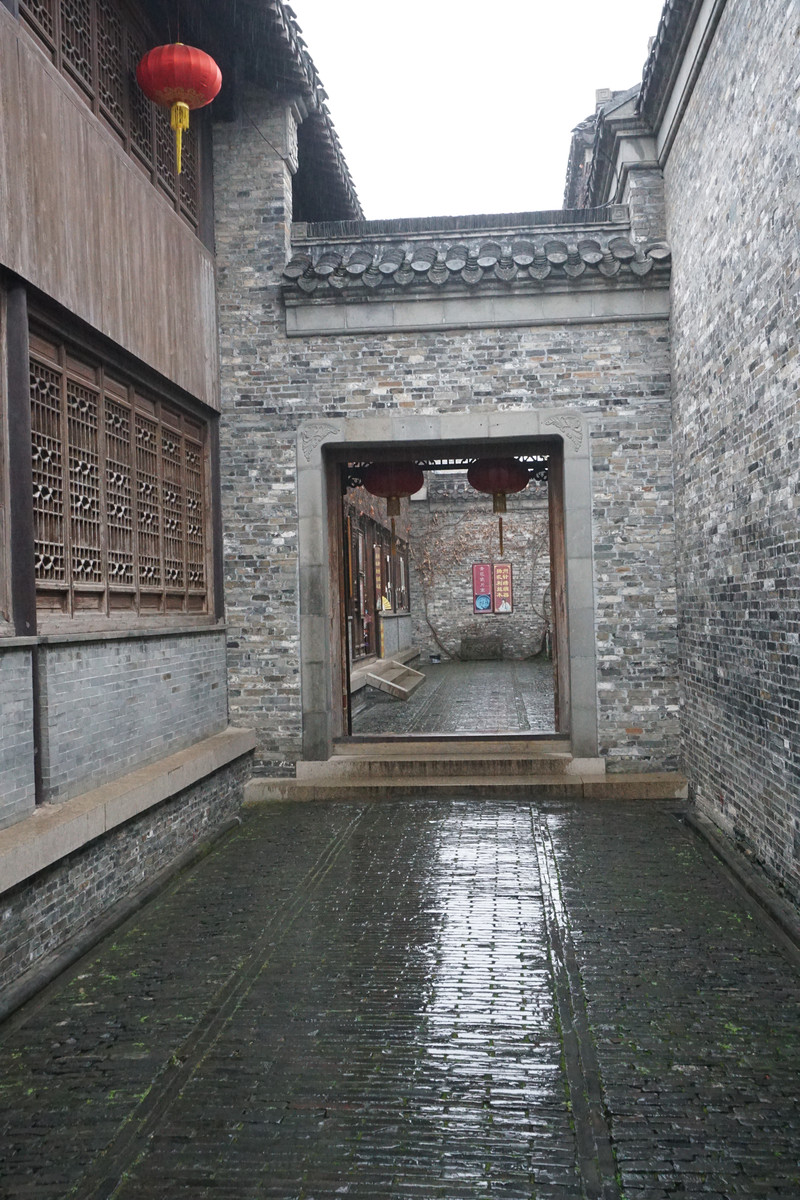

"Huo Lane" is a walled corridor built of blue bricks on both sides. It is the general name of the streets and alleys used in the south. It began in the Song Dynasty and the Yuan Dynasty and is also known as "Avoiding Fire Lane" and "Fenghuo Lane". As a road lower than the "street", Huo Lane later spread to other northern cities. In those days, Yangzhou built houses with random bricks and walls. The random bricks and walls did not expose wealth. On the one hand, they could save money, and on the other hand, they did not appear so flashy.
Xihongqiang Lane is wide in the south and narrow in the north. There are wells on the south wall and are close to the double-sided doors and rows of houses, making it convenient for the house to collect water in ordinary times. If a fire breaks out, water can also be taken in time to extinguish the fire. The wall next to it is arched to prevent the wall from sinking due to long-term water intake.



The Geyuan is named after bamboo and is famous for its bamboo. At most, more than 60 varieties of bamboo were planted in the garden. Currently, 45 varieties are alive. You can see all kinds of bamboo everywhere when you enter the back garden.

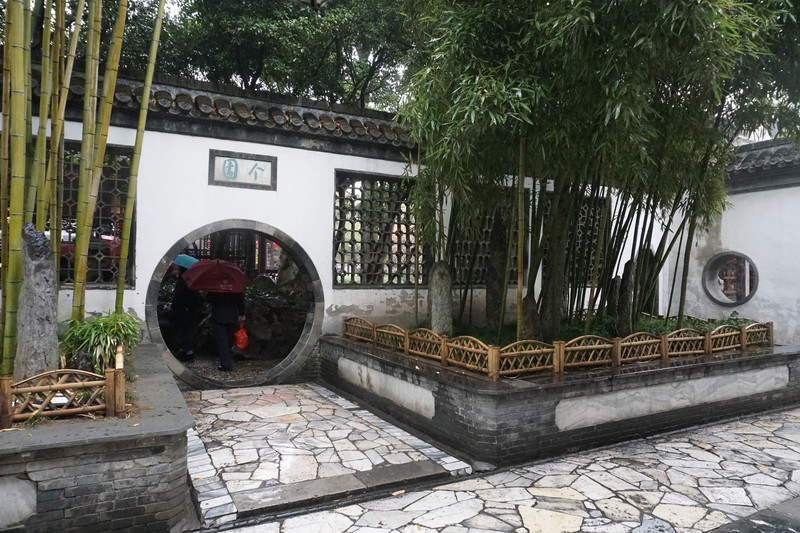



Baoshan Tower, located next to the rockery, is in a leading position in the whole park. It is seven bays long and is the crown of a classical private garden in China. The east and west of the building are autumn and summer mountains, and the south are spring and winter mountains. The corridor in front of the building surrounds the two mountains on the chest, hence the name Baoshan Tower. There is a couplet on it, and the horizontal version is titled "Hutian from Spring", which is quoted from Liu Fenghao's "Geyuan Ji" of the Qing Dynasty,"With the results of its eyes and heart construction, the hutian from Spring without going out of the house." The lower couplet above is "The ancient famous capital of Huaizuo, recording the ten miles of pearl curtains and dividing the bright moon" and "The garden and the modern resort, looking at the thousands of poles and cold green smoke on all sides." The horizontal couplet and couplets are both contemporary works. You can enjoy both summer and autumn scenery on the corridor of Baoshan Tower, so it is jokingly called the "Time and Space Tunnel" by modern people. Baoshan Tower is said to be used to entertain guests at that time. There was a flat ground in front of the building that was used as a stage.

There is a six-corner pavilion in front of Baoshan Tower, called "Qingyi Pavilion". There seem to be many Taihu Lake stones casually arranged around Qingyi Pavilion, and the outside of Taihu Lake stones is surrounded by a bend of green water. Under this heavy arch, Qingyi Pavilion is given infinite beauty from an ordinary building. In the old days, after the host hosted a banquet for guests, they walked here warmly while climbing the mountain. They looked around and saw the scenery of the whole garden in their eyes.



Although Geyuan is famous for its bamboo, the many varieties of maple trees in the garden are also one of the highlights. There are many maple trees planted near Qiushan. Due to the different varieties, no matter when you come to Geyuan, you can see the fiery red maple leaves. The city road was "Fireworks in Yangzhou in March", but Yangzhou at that time was definitely crowded with tourists and crowded with each other. If you can come to Yangzhou to enjoy autumn, you can avoid the peak of tourists and see the beautiful scenery of red maples circling Guangling for ten miles and the city covered with yellow ginkgo. Isn't it beautiful? But unfortunately, I went a little late this time and encountered continuous rain. Many maple trees were already covered with dead leaves. Only the four-season maple trees were left, but they were also scattered all over the ground. They were full of desolate beauty, and the only one beside them was the wintersweet blossoms, blooming alone in the cold, secretly fragrant.





Every time I see wintersweet, I always think of Lu You's "Bo Operator. Yong Plum "-scattered into mud and ground into dust, only the fragrance remains the same.



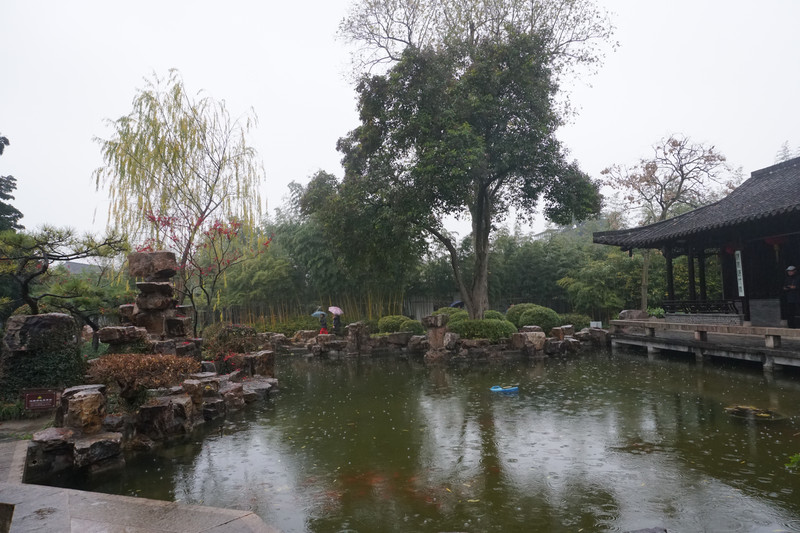




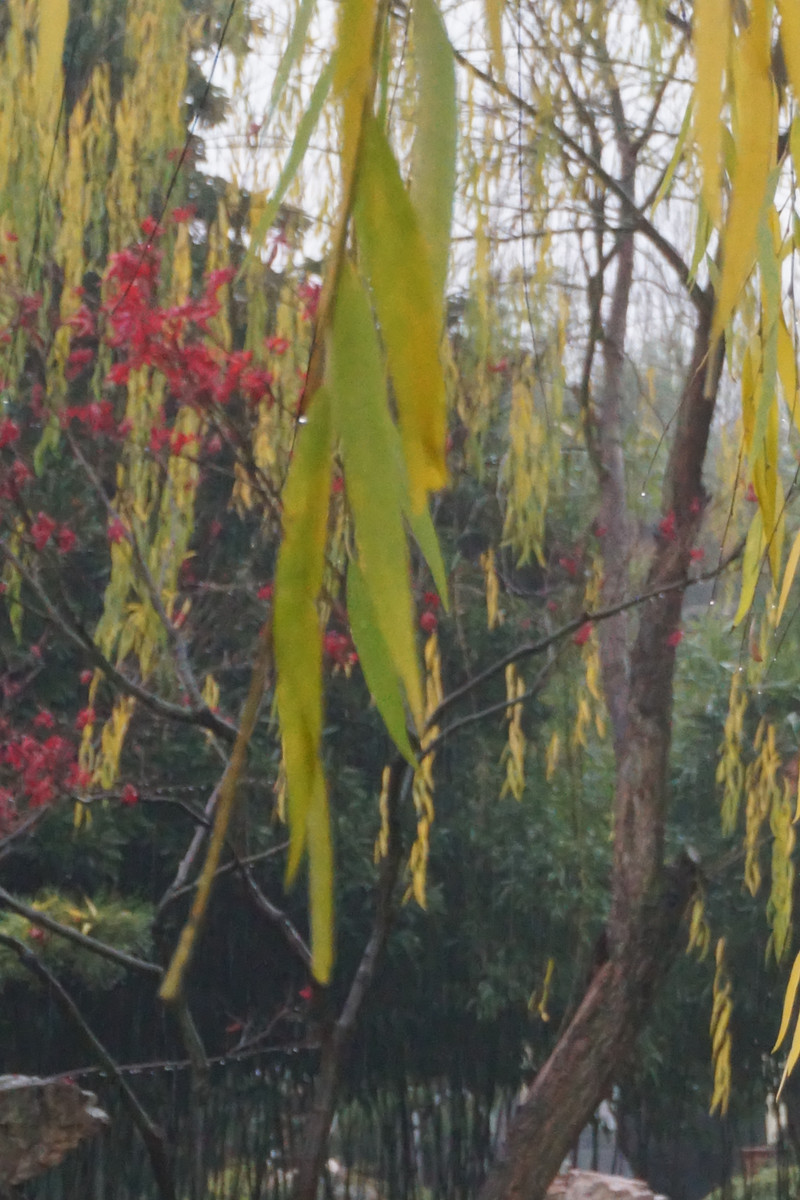


"Yangzhou is good, and tea house guests are invited. Add thousands of silk and pile up fine wisps, cut copper tobacco bags and grow seedlings, and drink and crystal dishes. "--" Looking at Jiangnan ", a scholar in Xing 'an of Qing Dynasty
Huaiyang Cuisine, one of the eight major cuisines in China, is also the first choice for state banquets. It is named because it originated in Yangzhou and Huai 'an and is known as the "No. 1 delicious flavor in Southeast China". It selects rigorous materials, pays attention to fine workmanship, is good at stewing, braising, roasting, attaches importance to soup blending, pays attention to original flavor, and is good at modeling. Huaiyang has fine points, beautiful shape, a wide variety of flavors, and exquisitely made. Representative dishes include: stewed lion's head, shredded silver carp's head, grilled whole pig's head, crystal dish hoof, three Ding steamed buns, emerald steamed buns, crab yellow soup buns, thousand-layer oil cakes, etc.
In Yangzhou, there are several well-known restaurants that sell Huaiyang cuisine. This well-known Yangzhou Shizilou (Dongguan Street Store) is only a few hundred meters away from where you live, so it became the first choice for dinner. Since there are only two people, the amount of meals is limited and it is not easy to order, but I have long thought about it before ordering and must try the famous crystal meat. It is said that Premier Zhou Enlai personally selected Zhenjiang meat for the founding ceremony of the People's Republic of China, which shows the delicacy and reputation of the meat.
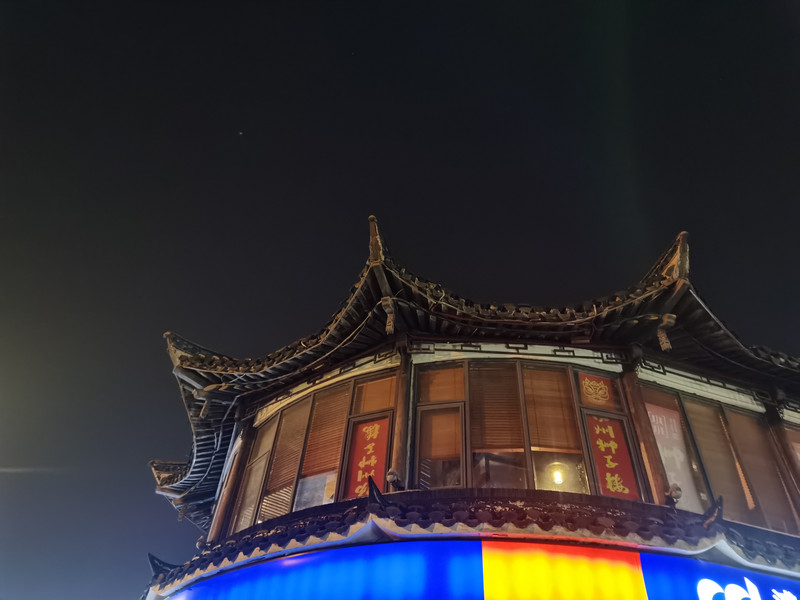
Lion Head, formerly known as "Sunflower Cutting Meat". Once, when Duke Huan of Tang Dynasty hosted a banquet, Wei Juyuan, a famous chef in the mansion, also cooked these four famous dishes from Yangzhou, accompanied them with delicacies of mountains and seas, and exotic land and land, which amazed the guests in the hall. When the dish of "Sunflower Chopping Meat" was served, the sunflower heart made of the huge meat balls was exquisite, like the "head of a lion." The guests took the opportunity to persuade the wine and said:"Duke Sion has been a soldier for half his life and has made outstanding military achievements. He should wear the lion's commandant seal. "The Duke of Sion happily raised his cup and drank it in one gulp. In order to commemorate today's grand event, it would be better to rename it as" Lion Head "for" sunflower cutting meat." With one hundred promises, Yangzhou has added the famous dish "Lion Head", which is braised and steamed, and is popular among the people. When I arrived in Yangzhou, I had to taste the lion's head.
Stewed the lion's head clearly. The soup is delicious. The lion's head is stewed until soft and rotten, without firewood or greasy. Since Yangzhou is the birthplace of Huaiyang cuisine, the lion's head here is not comparable to that of other places. On the third night, I tasted another store-Food for the Sky (it is also said to be a famous store). The taste was far apart and it was obvious that I still had to find the right store!

Wensi tofu, a dish that tests chefs 'knife skills, was created by Monk Wensi, a Yangzhou monk during the Qianlong period of the Qing Dynasty, hence its name. Its taste is light, and the hair-like tofu is soft, tender and mellow. It melts immediately in the mouth. In this severe winter, a bowl of tofu will immediately warm the whole body.

Yangzhou fried rice, which is known to people all over the world, has been eaten by almost every Chinese. It originates from the crushed gold rice that Yang Su loved in the Sui Dynasty.

Crystal meat is an absolute dish with wine. It selects pig front hoof as the main ingredient. It is processed through a special process of adding nitrate, marinating and then processed. The meat quality is finished. It is said that Premier Zhou Enlai personally selected Zhenjiang meat for the founding ceremony of the People's Republic of China, which shows the delicacy and reputation of the meat.

Crystal River Shrimp, the shrimp is crystal clear, crisp and refreshing, but slightly salty.
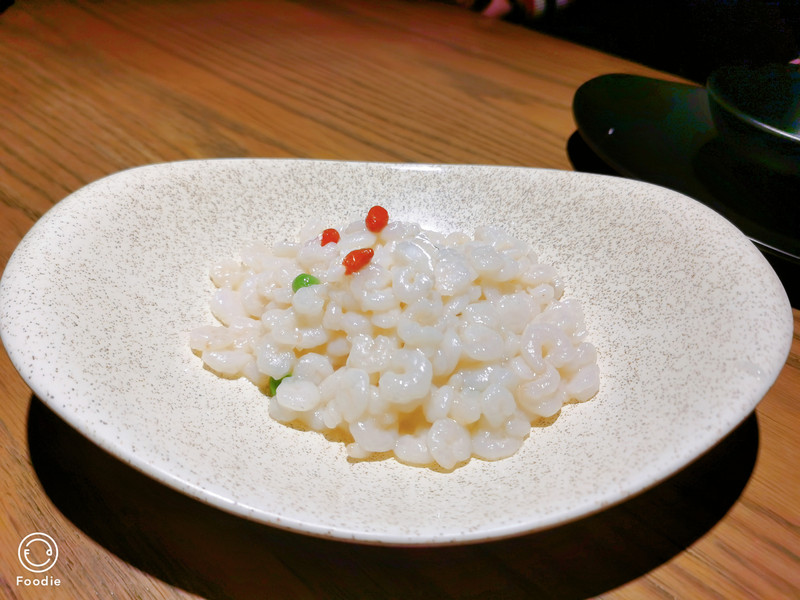
Boiling dried shredded silk, the special dish of Huaiyang cuisine, originated from the "Jiu-shredded soup" presented by local officials in Yangzhou during the sixth visit of Qianlong in the Qing Dynasty. The delicious flavor of ham and open ocean mixed in the chicken soup is penetrated into the extremely fine dried tofu shredded, which is intertwined with the threads, but there is not a drop of oil. It is extremely delicious and does not have a hint of bean smell. It is a masterpiece of inexhaustible delicacy. However, although the soup base is delicious, the dishes are not used for drinking soup, so the soup base is salty.

Sanding steamed buns, the taste of Garden Tea House will be better.

Signature Lion Head is one of the best dishes in Yangzhou Lion Building. The finished product has a diameter of about 15cm and a net weight of one catty and six taels. It contains two salted egg yolls. It is said that not all chefs can make such a big lion's head, but because of the huge amount, one can tell at a glance that two people will not be able to finish it. They only looked at it from a distance and never tasted it, and will try it again next time when they have the opportunity.

On a rainy night in severe winter, the temperature is close to zero and the cold is extremely cold, making it inconvenient to stroll around more. Pass through the Guandong Street Scenic Area and go back to your residence to make tea and chat.
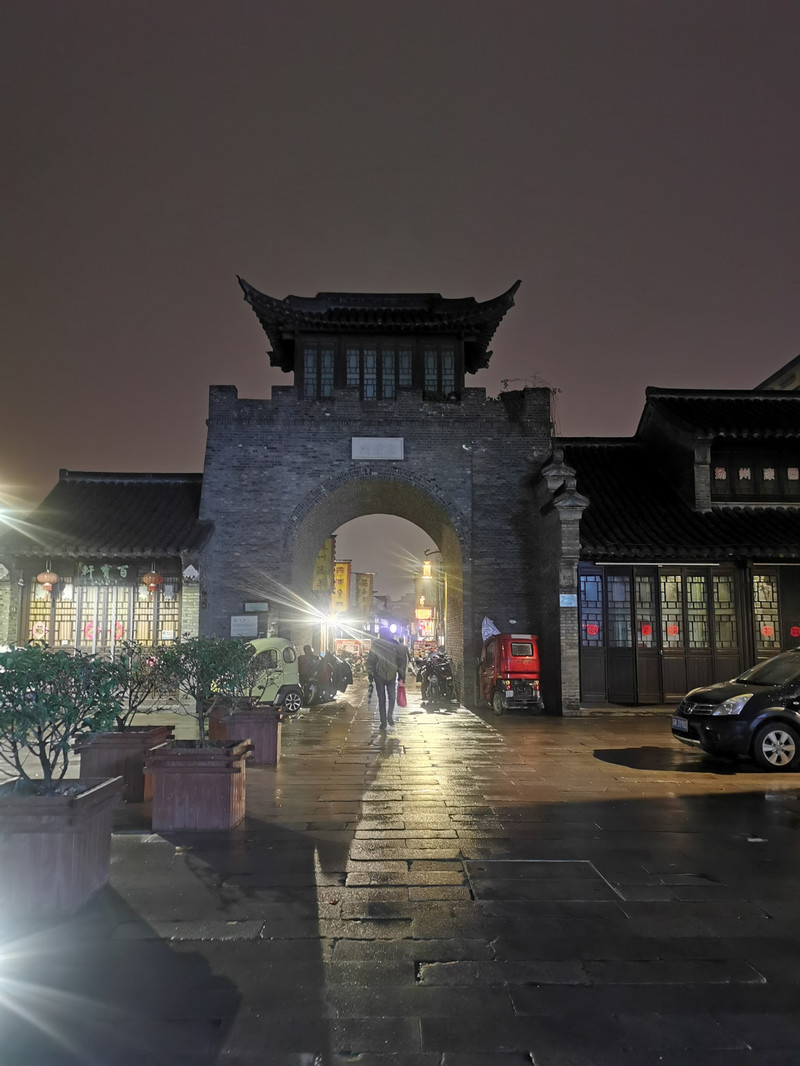




The details of Huaiyang cuisine are naturally revealed in its famous morning tea. When you come to Yangzhou, you will inevitably have to avoid the topic of eating morning tea, which is the so-called "bag of water" in the morning.
Among the traditional Yangzhou morning tea, the most famous interesting gardens, Fuchun, Yechun, Garden, etc., the delicious food of the Garden Tea House became the first meal of this Yangzhou breakfast.


Founded in 1995, the Garden Tea House has simple decoration and feels like a choice for more local people in Yangzhou. Compared with other tea houses, the taste is delicious and the price is close to the people. The tofu skin buns and Sanding buns in the store are also the best breakfast items. Unfortunately, I didn't taste the green vegetables buns. When I left, I took the oil cakes I bought home and gave them to my mother. I couldn't praise them. However, I don't like sweets, so I never tasted them.

Hot dried silk is a traditional local snack in Yangzhou and Taizhou. It is one of the famous morning tea spots. It has a simple and elegant color, soft and tender, and is delicious and meaningful. Not to mention the slightly different hot dried silk from the two places, even the taste of the dried silk from different local shops in Yangzhou is also different.
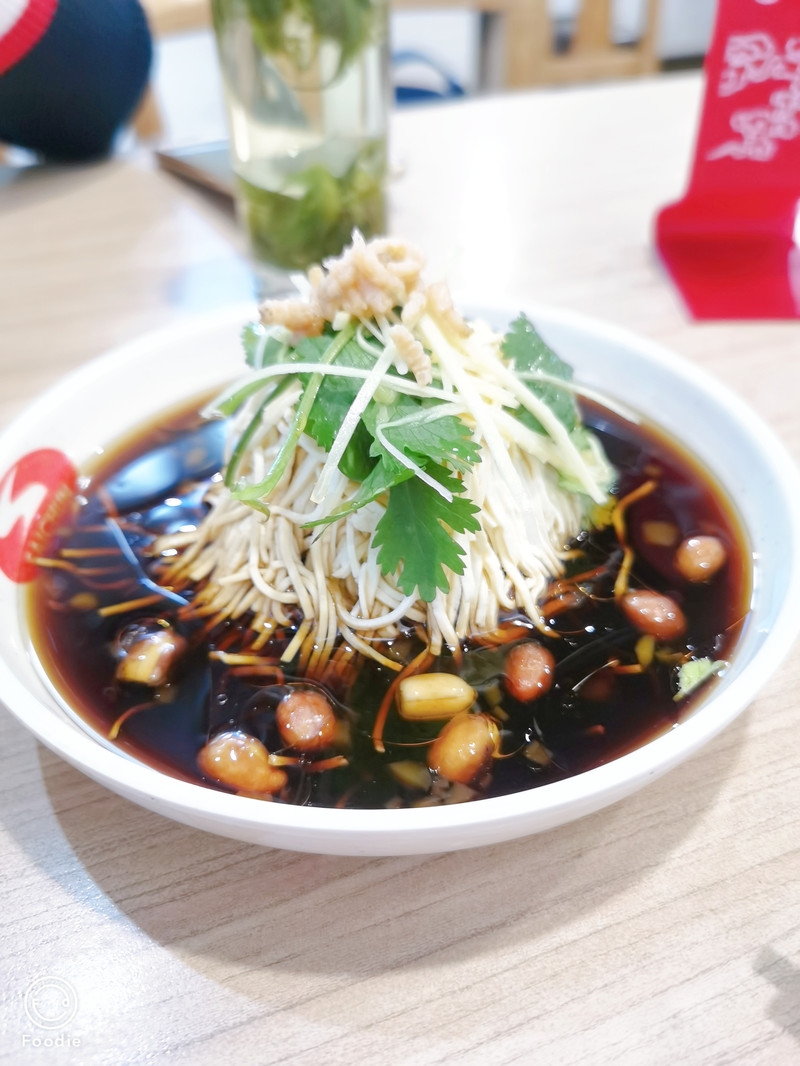
Due to the construction of the city, many waterways have already been covered, but many waterways can still be seen along the way. The famous Fuchun Tea House has established a branch on the river bank. It must have a good scenery.

After breakfast, walk to Yangzhou Slender West Lake, one of the symbols of Yangzhou.
Slender West Lake is located in the northwest corner of Yangzhou, with a total length of 4.3 kilometers, a tourist area of more than 50 hectares, and a water area of 700 acres. It is named because of the long and slender water surface. It is formerly known as Paoshan River, also known as the guarantee river and guarantee lake. It was originally a section of the canal during the Sui and Tang Dynasties, when the water from the Shugang Mountains merged with the water from the east of the Dabie Mountains in Anhui Province. Since the Sui and Tang Dynasties, scenic spots have been built one after another. During the Qianlong period of the Qing Dynasty, the salt industry in Yangzhou flourished. Due to the age of Slender West Lake, the center of the lake was silted up. Salt merchants invested in dredging and built many pavilions and pavilions on the east and west banks. There are Changdi, Xuyuan, Xiaojinshan, Chuitai, Yueguan, Wuting Bridge, Fuzhuang, Baita and other scenic spots in the park. The lake is winding and stretching. Emperor Kangxi and Emperor Qianlong of the Qing Dynasty visited Yangzhou south several times, and local lords competed to build gardens, so they came to the saying that "the prosperity of gardens is the best in the world." Cao Xueqin's grandfather, Cao Yin, had met the driver here four times. In the 18th year of Qianlong (1753), during Qianlong's southern tour of the Qing Dynasty, he built a palace in the west garden of Tianning Temple. Qianlong boarded a boat and toured the lake here, so it was called the "Imperial Wharf."
The Da Hongqiao Bridge was first built in the late Ming Dynasty. It was originally a wooden bridge and was called the Red Bridge because of the red railings on the bridge. In the first year of Qianlong (1736), the wooden bridge was changed to a stone arch bridge. Because the bridge looked like a rainbow lying wave, the "red bridge" was changed to the "Hongqiao". In 1973, when the Dahongqiao Bridge was rebuilt, it was expanded from a single hole to three holes. The middle hole was 8 meters in diameter and the side holes were 4 meters each. The middle hole was used to connect with pleasure boats and cruise ships. It has a total length of 44.36 meters and a width of 7.6 meters. The railings still use "one-word railings" to preserve the ancient charm, and the bridge deck is paved with granite with reed mat pattern. In 2016, due to the discovery of many structural cracks on the arch ring of the bridge body, it was rated as a dangerous bridge by professional organizations, and repair projects were launched in 2017. During the repair process, a somewhat special stone was found on the south side of the bridge. When staff from the cultural relics department arrived at the scene, they found that it was a broken stone tablet, about seventy to eighty centimeters long and about fifty centimeters wide. There are only three words left at the end of the main body of this stone tablet: "Gong's footsteps". The inscription on the inscription is engraved with the words "Kangxi was fifty-one years old in April of Imjin, Jiangning Weaving and Political Affairs Commissioner Cao Inspection Institute Cao Yin's inscription." There are two seals on the lower part, one seal is "Cao Yin's Seal", and the other seal is slightly vague, and the seal seems to be "Licao Xuan".
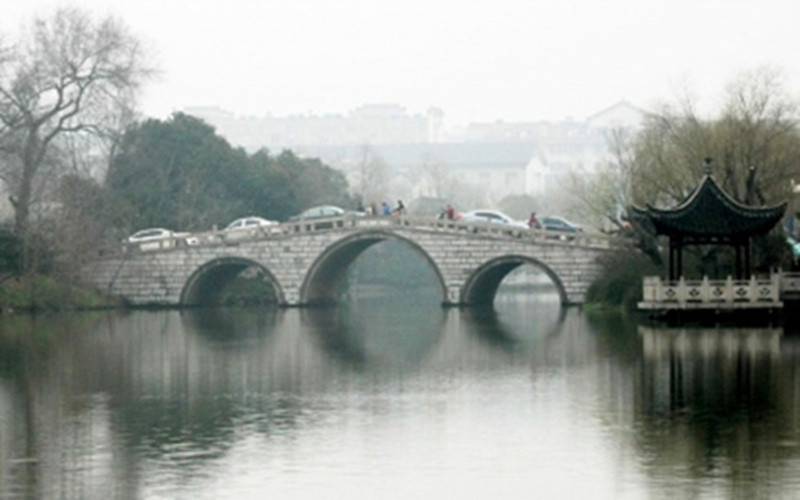
According to historical records, in the forty-fourth year of Kangxi (1705), Cao Yin, the General Political Envoy of Jiangning Weaving and General Political Envoy, established the Yangzhou Poetry Bureau and was ordered to publish and engrave "Complete Tang Poetry". In the 50th year of Kangxi (1711), Cao Yin once again established Yangzhou Bookstore in Lianghuai Yancao Chayuan, publishing "Peiwen Yunfu".

When you are too big, you can see the south gate of Slender West Lake. When you enter from the south gate, you can scan the code and rent a self-service explanation machine at the ticket office at the entrance.


Visiting Slender West Lake on foot requires considerable physical strength. If you can choose to visit Slender West Lake by boat, it is naturally a good choice. However, in the severe winter, there are not many tourists, and there are even fewer boats. Each small boat requires at least 6 - 8 people to make the trip. Since there were only two of us, we had to give up the plan.

After entering the south gate, the willow silk on the long embankment touches the water, and the so-called "the most affectionate is the Yangzhou willow." There is a pavilion built in the embankment near the water, hidden in the shade of willows. Red and white peach blossoms are dotted among the willows. In spring, there are peaches and red willows and green, reflected in the water, which is naturally like the sky.







Having a garden in the garden is a characteristic of Slender West Lake. Extend the embankment and move forward to Xuyuan. Xuyuan was built on the former site of "Taohuawu", located at the northern end of Chunliu on the long embankment of Slender West Lake. It was the former site of Taohuawu in Hanyuan in the early Qing Dynasty. It was the first building after entering the Slender West Lake Scenic Area from the south gate. In memory of the army commander who participated in the Revolution of 1911, it was rebuilt by Xu Baoshan, who was later killed by Yuan Shikai. The courtyard is neat and changeable. There is a lotus pond built by Huangshi in the garden. There is a winding water outside and a pond inside. The pool water is connected to the lake water. Across the pool is the pavilion, named "Tingli Pavilion", which comes from Du Fu's meaning of "two orioles chirping the green willows, and a line of egrets rising to the blue sky." There are two pieces of iron wok on display in front of the Tingli Hall. It is said that they were used to control water during the Xiao Liang Dynasty in the Southern Dynasties. There is also an inscription on the "Tie Wok Ji". It is said that they are relics from the Liang Dynasty in the Southern Dynasties. Each piece weighs about 3 tons and has been dating back to 1,400 years.
Xuyuan covers an area of only 0.6 hectares, but it has a decent structure and the courtyards are well arranged. There are scenery such as Listening Oriole Hall, Chuncao Pond Yin Pavilion, Shufeng Hall, etc.



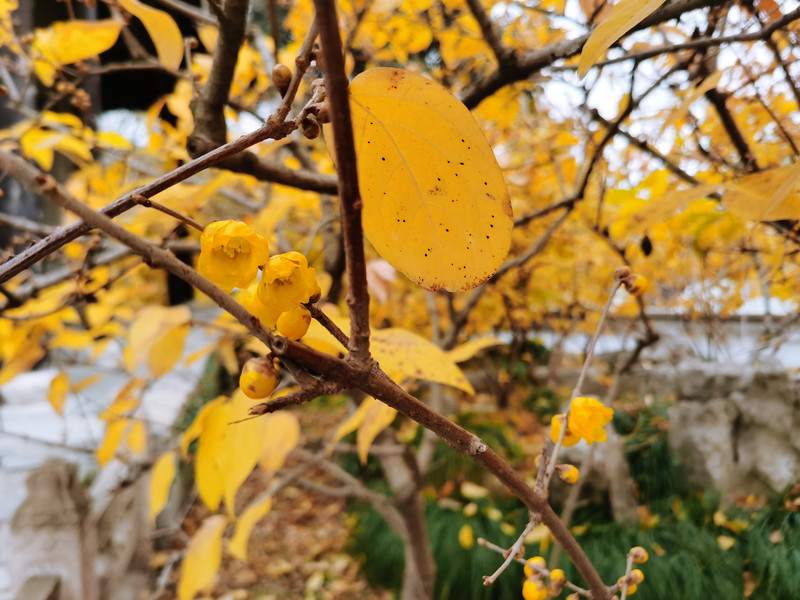
Bypass Xuyuan and pass Xiaohong Bridge. There is Xiaojin Mountain in front of you. At this point, the lake suddenly opens.
Xiaojinshan, also known as Changchun Ridge, is located at the apex of the "L"-shaped long and narrow river course in Slender West Lake. It is the best place to view the scenery. Similar to the white embankment of West Lake in Hangzhou, it is made of mud accumulated after digging the lake. Climbing high, you can have a panoramic view of the whole lake. When Emperor Qianlong went to Jiangnan, he dug out the Lianhuangxin River in order to enable him to reach Pingshantang by boat, dug out the soil and piled it up to form a small gold mountain. It is said that plum blossoms were planted all over the ridge at that time, and the aroma was overflowing, so it was called "Meiling is deep in spring." During the Xianfeng period, it was destroyed by war and rebuilt during the Guangxu period.

There is a strange-shaped strange stone in front of the Hall of Emperor Guan in Xiaojinshan. It is said to be a relic of the Song Dynasty's "Huashi Gang". In ancient times, transportation ships were numbered and counted, and ten ships were a class. Sending flowers and stones by ship is called the "flower stone class". Zhao Ji, the Emperor of Huizong of the Northern Song Dynasty, particularly liked strange flowers and stones. On the occasion of his 60th birthday, he decided to build a Wanshou Mountain in Kaifeng Prefecture, the capital. Officials from all over the country paid tribute one after another. Officials from Guangxi paid tribute to stalactites formed by dripping water from this cave. During the transportation process from south to north, they happened to encounter Fang La's peasant uprising, so they were left behind in Yangzhou.
The strangeness of this stalactite is that the whole body is like a long basin lying sideways. The treasure ship sets sail, and the back is full of stalactites, with dark pearl bumps, and it is extraordinary. There are several concave places in the middle of it, and it is low in the south and high in the north, and it gradually rises on all sides. From a distance, there are thousands of ravines in the stone grooves, and the undulating mountains are rolling and rolling, with ups and downs, far better than the natural mountains and rivers. Two exquisite juniper trees and flowers and plants that match the seasons are planted in it, which looks very like the lush Cangshan Mountains and dense forests. The grooves that communicate with each other after the rain are filled with water, and the interconnected lakes and ponds reflect the reflection of the peaks, which is like a condensed picture of the rippling blue waves of the Slender West Lake. The peaks reflect the water, the blue waves are sparkling, and the mountains and rivers are green. Beautiful, lush flowers and trees, and extremely beautiful, this stalactite is simply a landscape bonsai made in heaven.
This is also the largest stalactite in Yangzhou at present. This stalactite was originally in Yangzhou's Dongquanmen Pot Garden and was moved here in the early days of liberation. Now this flower stone has become a big treasure in Xiaojinshan and a town park of Slender West Lake Park. The treasure of the park.

In 1952, the thousand-year-old ginkgo trees near the Tang Dynasty Stone Pagoda in Yangzhou were struck by lightning. The dead wood and dead branches were not allowed to be thrown away and were transplanted here. In 1956, gardener Wei Jinsheng planted a mountain of climbing trees next to the dead trees. The flowers and vines climb up the trees, and the trees are tall and straight, with smooth wood grains, but without vitality. Whenever spring is late and early summer, the flowers and leaves are luxuriant, and one wither and the other flourish, just like dead trees are in spring, hence the name "dead trees are in spring".

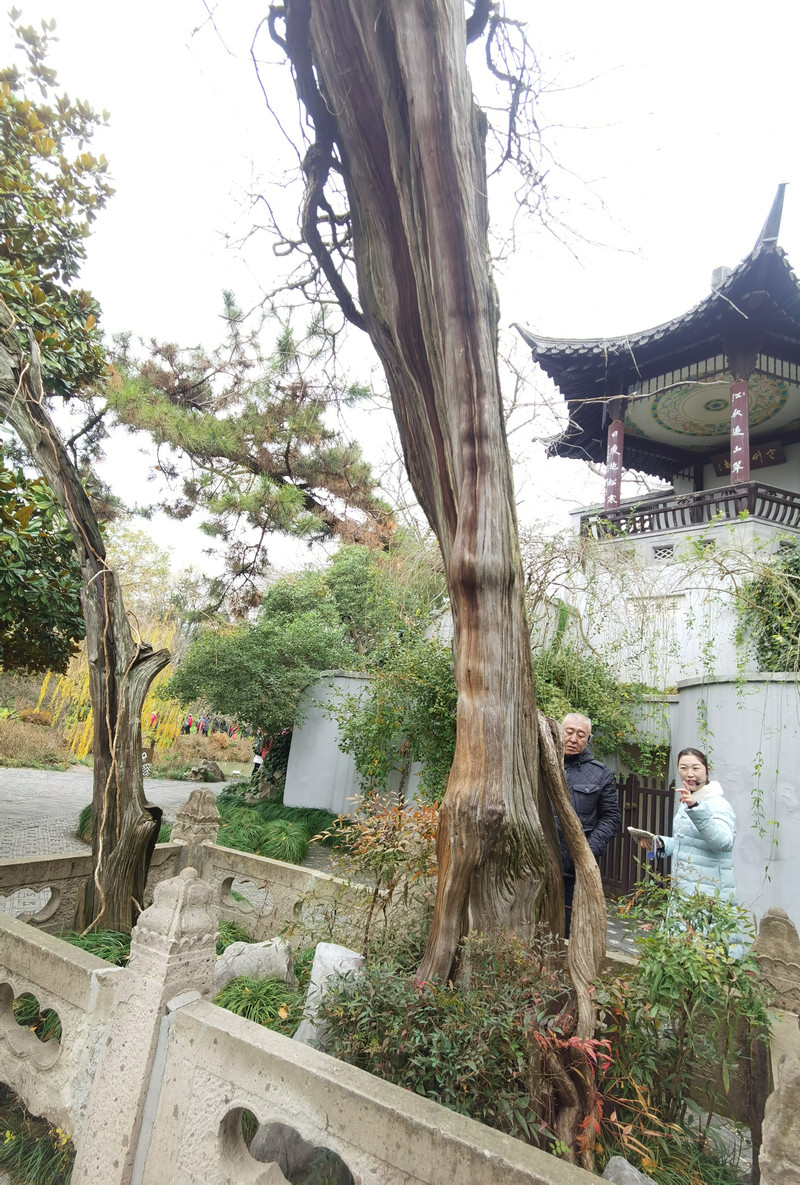

Along the way, wintersweet blossoms are blooming vigorously and fragrant for several meters.


The blowing platform was built at the end of Changzhu. Legend has it that Qianlong once fished here, so it is also called Diaoyutai. This is a good place to view the Wuting Bridge and the White Pagoda from afar.


Speaking of Slender West Lake, the first logos that people think of should be Wuting Bridge and Baita.
Wuting Bridge was originally named Lotus Bridge, because it looks like a blooming lotus flower, so it is called Lotus Bridge. The bridge body is built into an arched scroll shape, connected by three types of fifteen different scroll holes, so that ethereal arches are arranged on the thick bridge foundation.






If you pass Wuting Bridge, you will see Fuzhuang on the left and the White Pagoda in front of you. You will reach the Misty Rain Bridge on the Fourth Bridge.
The White Pagoda of Slender West Lake was built during the Tonghe period of the Liao Dynasty, rebuilt in the fourth year of Qingning of the Liao Dynasty (1058), and was completed in Jiajing of the Ming Dynasty.
It was rebuilt during the period of Longqing, Wanli and Qianlong of the Qing Dynasty. The white tower is 30.6 meters high and has a masonry structure. The plane of the tower is octagonal and consists of a tall waist Sumi seat, an octagonal pavilion body with double eaves, a huge wave blocking and a thirteen-day phase wheel at the top.
The story of "building a white tower overnight" in "The Unreal History of the Qing Dynasty" is still widely circulated in Yangzhou today. It is said that while Qianlong was touring Slender West Lake, he arrived at the Wuting Bridge and suddenly said to the accompanying officials in Yangzhou:"This place is like the spring shade of Qiongdao in the Beihai of the capital, but it is a pity that there is a white tower." Early the next morning, the emperor opened the pavilion and saw a white tower standing tall next to the Wuting Bridge. He thought it was falling from the sky. The eunuch beside him quickly knelt and reported:"It was made overnight by a big salt merchant to make up for the emperor's regret of visiting the West Lake." It is said that Jiang Chun, one of the eight major salt merchants, bribed Qianlong with thousands of gold to draw a picture. Then, one night's sound used salt bags as the basis and paper bundles as the surface. Although he could only be long-sighted and not close, Qianlong said with emotion:"The Yangzhou salt merchants are among the richest in the world, and they really deserve their reputation." Although this is just a story interpretation, it also shows the strong economic strength of the salt merchants at that time.


Li Baiyun "Fireworks fall under Yangzhou in March". In the third month of the lunar calendar, Yangzhou in late spring is the song of the orioles and Yan. It is a good time for peach and willow trees to be green. Tourists are crowded with them. In addition to the general scenery, more people come to enjoy the Qionghua.
Qionghua, also known as the Eight Immortals and Iris, blooms in April and May every year. The flowering period is extremely short, only about 20 days. Its flowers are as big as plates and white as jade. They are the flowers of Yangzhou City. They are known as one of the three treasures of Kunshan and are a unique and precious flower species in Chinese history. But in fact, the famous ancient Qionghua disappeared long after the fall of the Song Dynasty. The "Qionghua" seen by people today is actually a gathering of the Eight Immortals.
It is said that during the Tang Dynasty, Emperor Yang of the Sui Dynasty heard that there were blooming Qionghua in Yangzhou, and many people went there because of it. Therefore, in order to see the beauty of the Qionghua, Emperor Yang of the Sui Dynasty personally marched to Yangzhou to see the Qionghua. However, the journey was long and arduous. Therefore, in order to see the Qionghua as soon as possible, Emperor Yang of the Sui Dynasty ordered the excavation of the Grand Canal, which quickly reached Yangzhou, and the Grand Canal opened up transportation, so the economy also developed.
During the Song Dynasty, Qionghua uprooted and buried the Qionghua in Yangzhou due to the invasion of the Jin soldiers. But after a year, the qionghua that had been shoveled gave out new shoots again. Coupled with people's careful maintenance, it slowly returned to its original beautiful and vigorous appearance. People thought that Qionghua would grow again as before. Surprisingly, on the day of the Song Dynasty's defeat, the Qionghua in Yangzhou suddenly died. In this way, the unparalleled Yangzhou Qionghua in the world became a rare treasure and was no longer visible. Its face.


This is not the time when the Qionghua is in full bloom, so the thief can feel the beauty of the Qionghua when it is in full bloom.


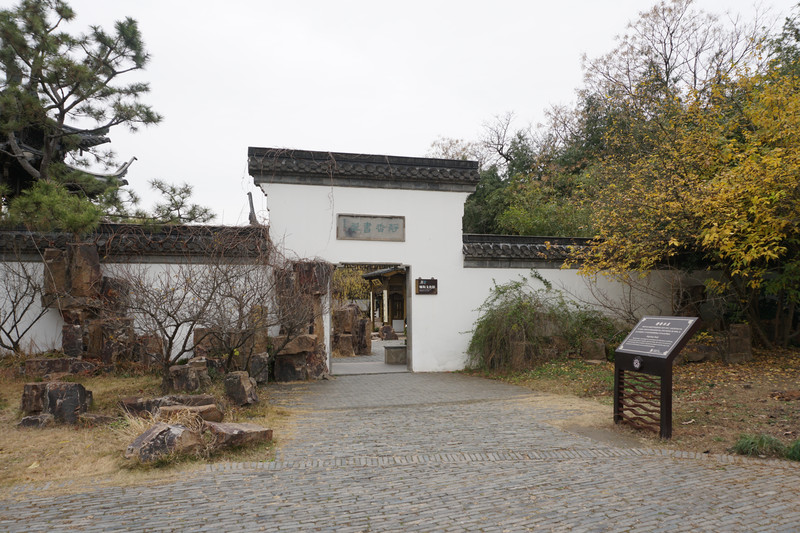

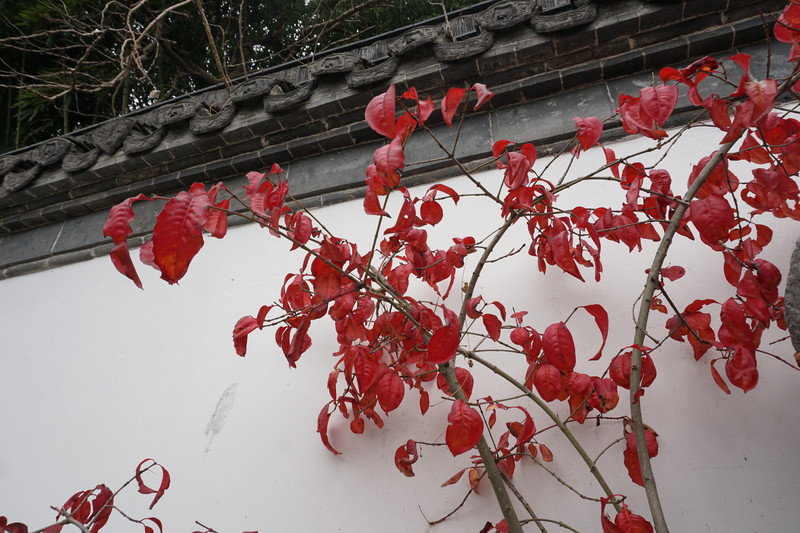

Du Muyun, a poet thousands of years ago:"On the bright night of the twenty-fourth bridge, where can the jade man teach to play flute?" The 24th Bridge Scenic Area in Slender West Lake is quite famous. It consists of four parts: Linglong Flower World, Xichun Terrace, single-hole stone arch bridge and Wangchun Tower. Among them, the stone arch bridge is in a jade belt shape, 24 meters long and 2.4 meters wide, with 24 jade railings surrounding both sides. There have been two theories circulating about the 24th Bridge.
First, according to Shen Kuo's "Mengxi Bi Tan·Bu Bi Tan", during the Tang Dynasty, there were twenty-four bridges in Yangzhou City, including Chayuan Bridge, Daming Bridge, and Jiuqu Bridge. The rear waterway gradually silted up, and now there is only Kaiming Bridge and Tongsi Bridge. The place names of the bridge no longer exist. The second is that the name of the bridge is "Twenty-Four", or called the Twenty-Four Bridge. According to Li Dou's "Yangzhou Painting Boat Record" record 15:"The twenty-four bridges are the Wujia Brick Bridge, a Hongyao Bridge, behind the Xichun Terrace. "Wujia Brick Bridge is in the western suburbs of Yangzhou. Today, this newly built scenic spot adopts the name of the bridge "Twenty-Four".





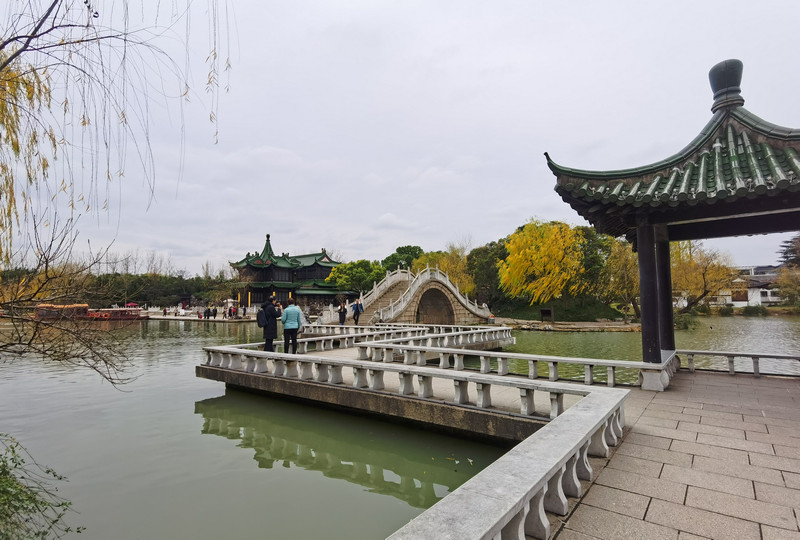
Continuing northbound, there are multiple exhibition areas. Yangzhou bonsai art began in the Tang Dynasty and flourished in the Ming and Qing Dynasties. It is one of the five major schools of tree stump bonsai in my country. To the north of Slender West Lake, there are the "Yangpai Bonsai Museum" and the "Water System Miniature Garden".







Close to the north gate, you can see the tall

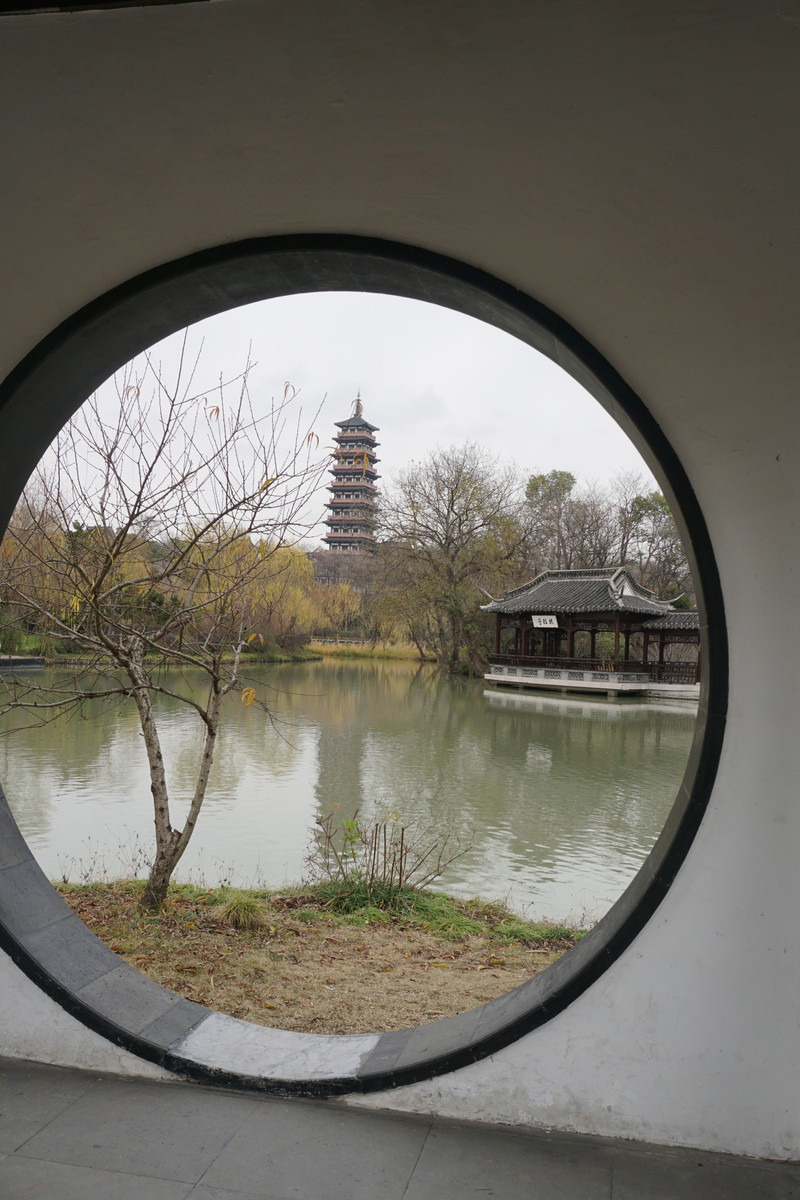
When you see the Spirit Tower, you will know that it is not far from the north gate.

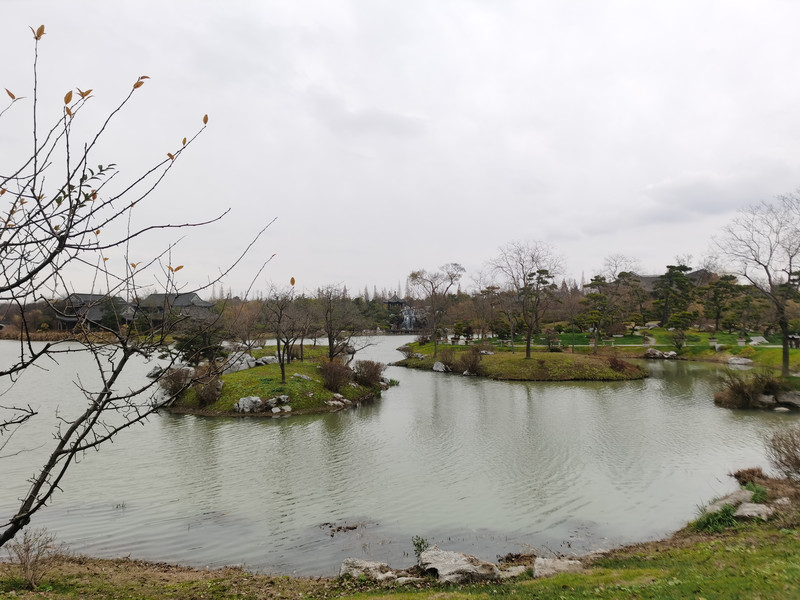

Walking out from the north gate, it was already two o'clock in the afternoon, and I was hungry. On the left hand side after going out was the famous Yechun Tea House. This Yechun Tea House (Pingshantang Store), located outside the north gate of Slender West Lake, has a good environment. I ordered a few refreshments and drank it.
Yechun Tea House, Fuchun Tea House, and Quyuan Tea House are all old tea houses in Yangzhou. I have never been to Fuchun this time, but Yechun does taste average and the price is not particularly affordable (compared to Huayuan Tea House).
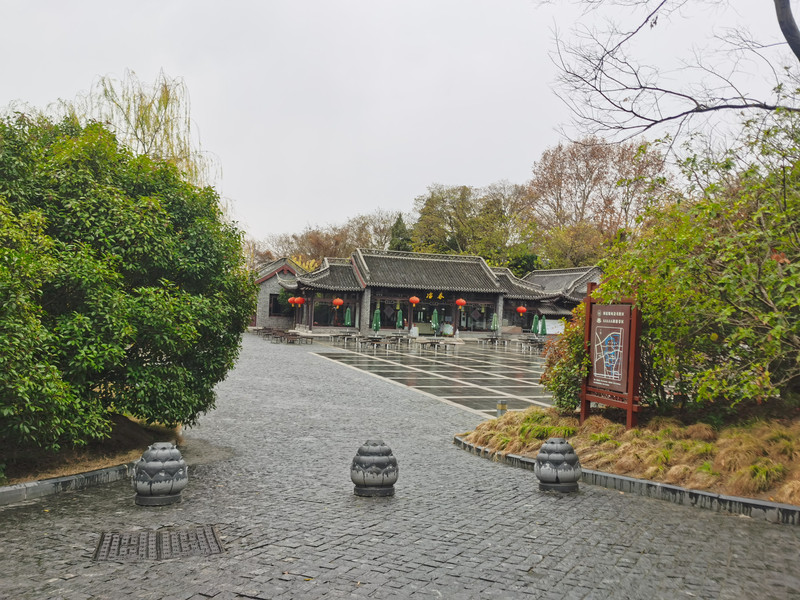


Outside the tea house is Jianzhen Square. Jianzhen's original surname was Chunyu, originally from Jiangyang, Guangling (now Yangzhou, Jiangsu). When he was 14 years old, he became a monk in Daming Temple in Yangzhou. In 742 AD (the first year of Tianbao of the Tang Dynasty), at the invitation of Japanese monks, he crossed eastward six times and finally arrived in Japan in 754. The first five eastward crossings failed due to various reasons. After the fifth eastward crossing, he became seriously ill and became blind and returned to Yangzhou. In 753 AD, because Emperor Xuanzong of the Tang Dynasty believed in Taoism, he wanted to send Taoist priests eastward to Japan, but Japan refused and prohibited Jianzhen from going to sea. Then Jianzhen secretly took a boat to Huangsipu, Suzhou (in Dongdu Garden, Luyuan, Tangqiao Town, Zhangjiagang City), and took a big ship to send Tang envoys. On November 16, the fleet set sail to sea and arrived in Satsuma, Japan on December 20. The sixth eastward crossing was finally successful.

Go out and cross the road and walk up the stone steps to the famous Daming Temple.
Daming Temple is famous because Monk Jianzhen once taught rules and precepts here
。In the first year of Kaiyuan (713), Jianzhen became a well-known monk proficient in Buddhist Luzong theory and returned to Yangzhou, where he was appointed as the chair of Daming Temple in Yangzhou. Focusing here, he began his extensive religious and social activities in Huainan area for the next thirty years. When Emperor Qianlong of the Qing Dynasty arrived in Yangzhou in 1765, he personally wrote a pen to change it to "Imperial Title Fa Jing Temple" because he was taboo about the word "Ming". This name lasted for more than two hundred years. During the "Cultural Revolution" period, the Red Guards wanted to smash the temples in the name of "destroying the four old traditions." The Prime Minister sent an urgent telegram ordering the resolute protection of the historic sites of Daming Temple. The temple was closed in time to save the ancient temple from disaster. In 1979, the temple was fully repaired, the Buddha statues were decorated with gold, and the Daming Temple took on a completely new look. In 1980, in order to welcome Master Jianzhen's return to China to tour the exhibition, it was renamed "Daming Temple".
Nowadays, Daming Temple is also seriously commercialized. After entering the door, there are free explanations in the Tianwang Hall, but it also feels closer to commercial promotion.

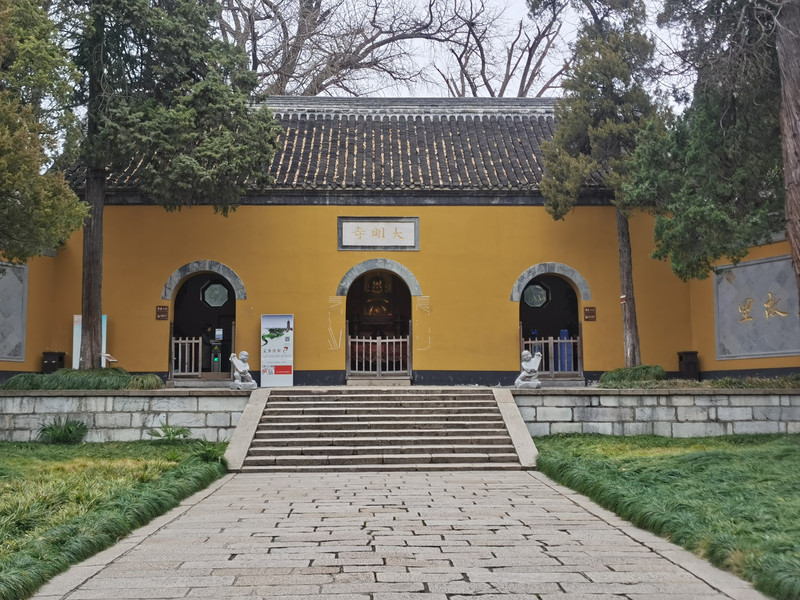
Passing through the Tianwang Hall and climbing up the steps is the Daxiong Hall, with Pingshan Hall on the west side.
Pingshantang was built in the eighth year of the Qing calendar of Emperor Renzong of Song Dynasty (1048) and was founded by the then prefect of Yangzhou.
Ouyang Xiu, known as the "prefect of articles"
Build. At that time, Ouyang Xiu was transferred to Yangzhou, an important town in the southeast. After arriving in Yangzhou, he followed his usual style of lenient governance and built a hall on Shugang, the commanding height of Yangzhou City. Because standing in front of the hall, you could overlook the mountains in the south of the Yangtze River, it was named "Pingshan Hall." Many couplets and plaques in Pingshan Hall record the story of Ouyang Xiu holding a poetry reception here and enjoying fun with the people. The "fifth spring in the world" is also here. Later, while Su Shi was an official in Yangzhou, he built the "Gulintang" south of Pingshantang in memory of his teacher Ouyang Xiu.
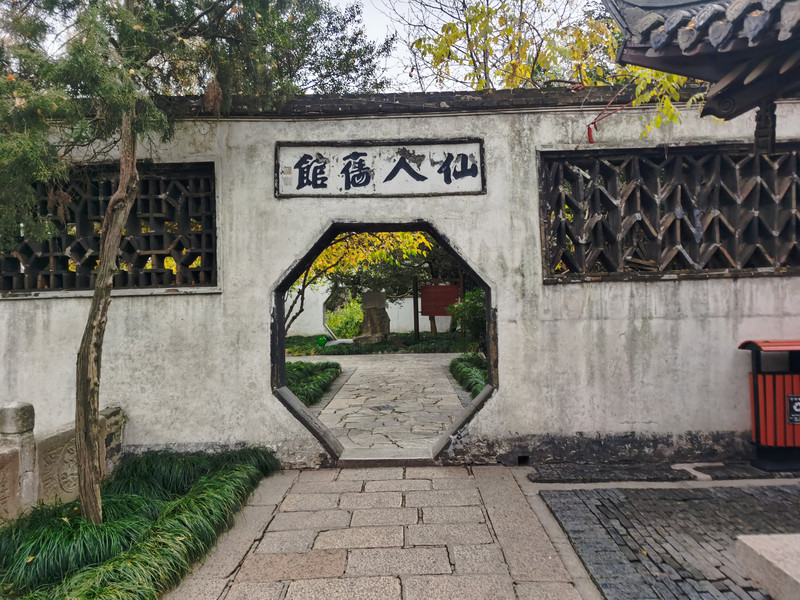


The four words "Fengliu Wanzai" were inscribed by Liu Kunyi, then governor of Liangjiang during the Guangxu period. The word "Liu" is a little less and the word "zai" is a little more, as if caused by the flow of the wind, which is interesting.

Due to the high terrain of Pingshantang, it is said that you could see Zhenjiang City dozens of miles away from the Pingshantang Hall. Now there are many high-rise buildings and no trace of them are found. Standing there, I suddenly felt that perhaps standing here and overlooking Zhenjiang thousands of years ago, I would have the feeling when Huang Gongwang painted "The Painting of Residence in Fuchun Mountain".

On the southwest side of Ouyang Temple, there is a four-corner pavilion shaped round door leading to the West Garden. It is inlaid with a stone carving of "Zhenshang", which is the name of the Qing Dynasty calligrapher Deng Shiru Zhuan. At this time, many places in Daming Temple were not allowed to enter due to maintenance.

On the plaque in the Ouyang Temple,"Virtuously guarding the Qingfeng" is the imperial title of Kangxi.

In September of the fifth year of Guangxu of the Qing Dynasty (1879), Ouyang Bing, the grandson of Ouyang Xiu, a Jiangsu candidate, carved it according to a copy of the stone statue of Ou Gong from the Qing Dynasty Nei Mansion in Chuzhou. This stone statue uses the principle of light refraction. The beard is white when viewed from a distance and black when viewed up. No matter what angle, the face, eyes and feet of the stone statue are always facing the viewer.




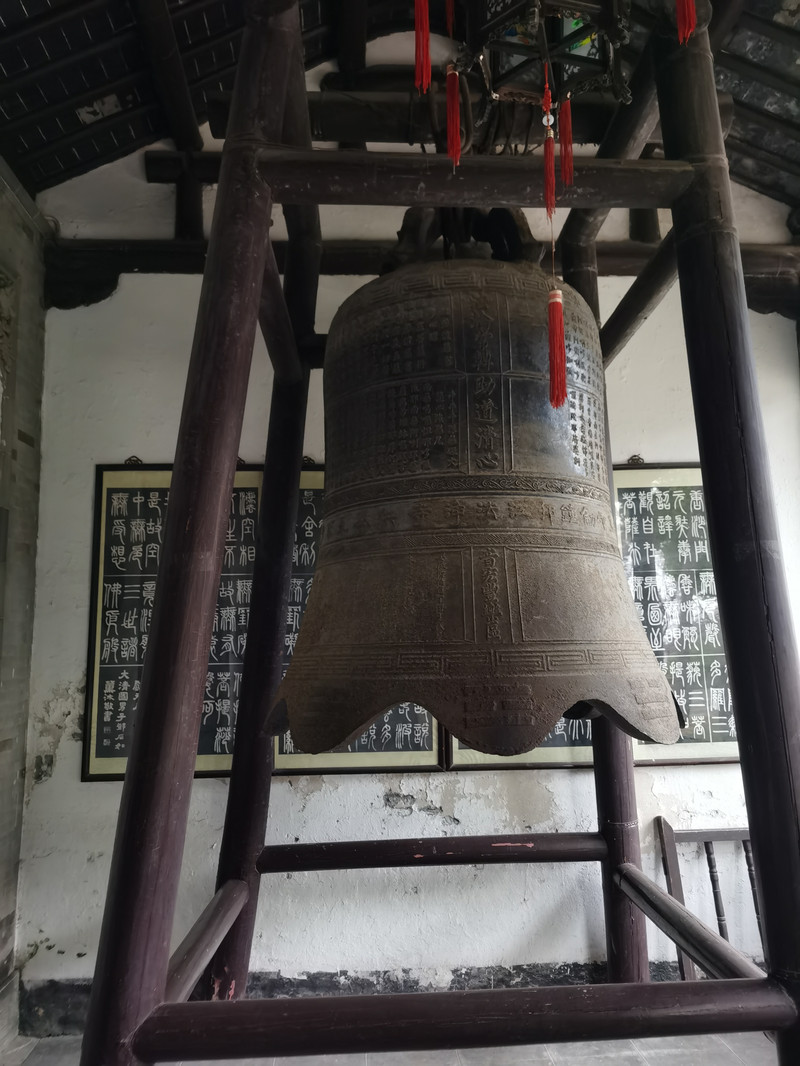



The Qiling Spirit Pagoda is located on the east side of the Daxiong Hall of Daming Temple. In the first year of Emperor Wen's Renshou of the Sui Dynasty (601 AD), the Qiling Spirit Pagoda was built in the Daming Temple. The tower is nine-story high and the Buddha's bones are enshrined in the tower, which means that the Buddha is here. This was the words of burning the spirit left by monk Dajue, so it was called the "Qi Spirit Tower." It was turned into scorched earth in the third year of Huichang, Emperor Wuzong of the Tang Dynasty (843 AD). In 1980, the statue of Master Jianzhen was returned to "visit relatives," and people in the valley community proposed the reconstruction of the Qiling Tower. In 1988, Master Rui Xiang, the abbot of Daming Temple, selected a site in the east garden of the temple to rebuild the spiritual tower and set up the cornerstone. After Master Duan Xiang passed away, Master Nengxiu presided over the work of Daming Temple and started drilling on August 27, 1993.
The current Spirit Tower has an elevator inside, and you need to pay an extra elevator fee to climb the tower. The top floor is equipped with Buddha bone relics, and you can have a panoramic view of Slender West Lake on the eighth floor.



It was already past 4 o'clock in the afternoon after visiting Daming Temple, and dinner continued to be eaten at the "Little Lion Building" near the accommodation. On the rainy night of the twelfth lunar month in Yangzhou, no matter whether it is on the streets or in the shopping malls, it is relaxing physically and mentally, but it is extremely cold. The ancient city in the night has a unique tranquility. It seems to be silently recalling the past alone, the bustling hustle and bustle of the past, and the miserable war massacre of the city.
The Dongmen site has been constructed since the Tang Dynasty and has been continuously repaired during the Five Dynasties and the Northern Song Dynasty. It was an important frontline town during the Southern Song Dynasty. The Dongmen site during this period was built in a much more elaborate place than at any time in history. The city gates seen today are basically It belongs to the Southern Song Dynasty.

The ancient canal gave birth to the prosperity and civilization of ancient Yangzhou. One of its ferries, the Guandong Ancient Ferry, has now been developed into a famous attraction of the ancient canal. This road starts from Slender West Lake in the north and reaches the Guazhou Ancient Ferry in the south. It stops at the Guazhou Scenic Area along the way. Water tour routes for scenic spots such as Gaomin Temple, Wenfeng Tower, Longshou Pass, Puhardingmu Cemetery, Shuangweng City, Guzhu Bay, etc., and finally reaches the Guandong Ancient Ferry here.
"The Bianshui River flows, the Surabaya River flows, and it flows to the ancient crossing of Guazhou, and there is a little sorrow in Wushan." Bai Juyi's "Long Lovesickness" was famous in the world. Walking here, what came to mind is exactly this word. Thousands of miles away in Jiuquan, Gansu Province, there is also Guazhou, which has the same pronunciation and different characters, which often confuses many people in the world. The distant Guazhou has been a transportation hub for east and west since ancient times. It was an important commercial town on the ancient Silk Road, facing Guazhou here.

Siwang Pavilion, formerly known as Wenkui Tower, was renamed Kuixing Pavilion and is an integral part of Jiangdu County School. The building is a brick-and-wood structure with three floors and eight sides, with a tiled roof. Because the ground floor has arches on all four sides connected with the cross street, it is called the "street crossing pavilion". Each pavilion eaves has eight flying horns, and each has wind chimes. Whenever the wind passes, the bells ring melodious. It is said that in ancient times, all sides here were waterways, and the pavilions were used to connect bridges.

Wenchang Pavilion, located at the intersection of Wenhe Road and Wenchang Road, is known as Yangzhou's well-deserved landmark building. It was built in the 13th year of Wanli of the Ming Dynasty (1585) and belongs to the Yangzhou Prefectural Building Complex. In the old days, there was a plaque reading "Han Shang Wen Shu" hanging on the pavilion. The Yangzhou Prefectural Building Complex at that time has been successively destroyed, and only this pavilion is left.

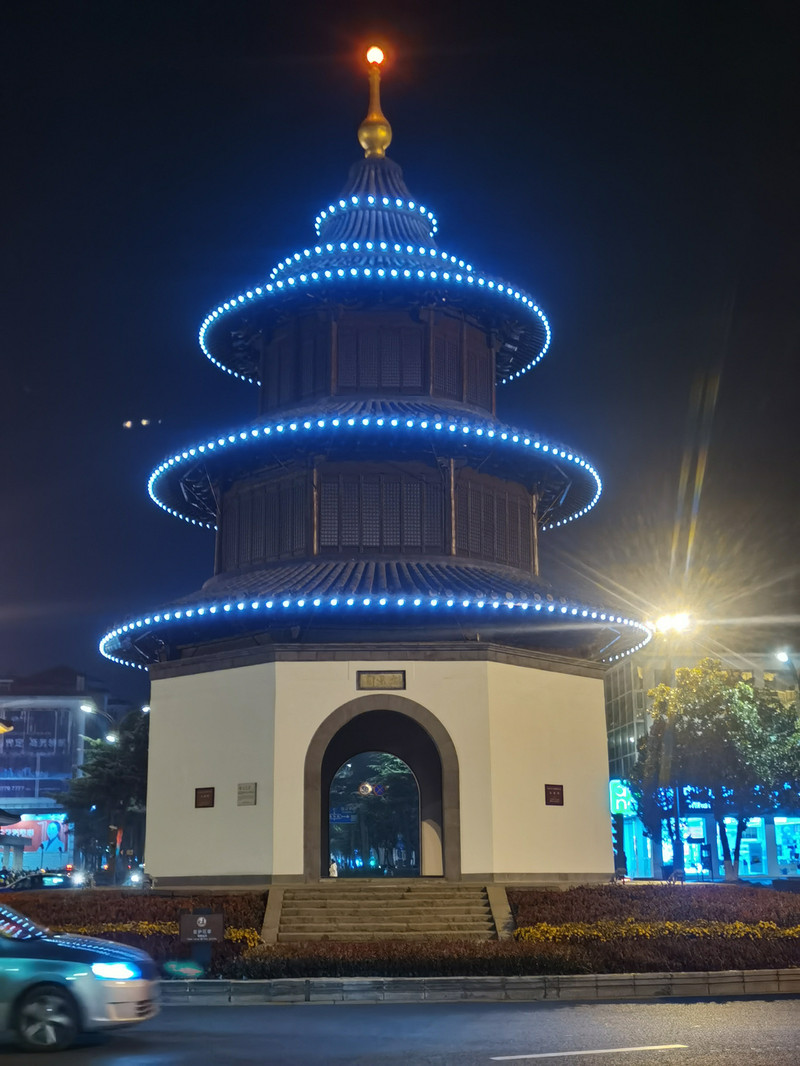
On the morning of the third day, I went to experience the famous Quyuan Tea House. It was in the off-season for tourism, so there were not many diners. It is said that in the spring and summer, the queue started at 6 a.m. It was already past eight o'clock in the morning when we arrived here, but there was no need to queue at all and there were still many empty seats left.

Located on the edge of Slender West Lake, the Quyuan Tea House in the guest house was originally the residence of the salt merchants. When Emperor Qianlong visited Yangzhou for the sixth time, he visited this place four times. The word "Quyuan" was also given by Qianlong, and now you can still see half of the remaining "Quyuan" monument.


The scenery of Quyuan Tea House is undoubtedly the best among all teahouses in Yangzhou. The snacks taste really good. The price is higher than that of Huayuan Tea House and similar to that of Yechun Tea House, but it feels that the taste is much better than that of Yechun Tea House. Melaleuca oil cake and emerald steamed wheat are known as the unique products of Yangzhou snacks. Because they don't like sweets, they have never tasted Melaleuca oil cake. Moreover, Yangzhou snacks are all very big. After eating that Melaleuca oil cake, your stomach will probably be almost full.





Crab yellow dumpling is a famous food in Jiangsu. Nanjing, Jingjiang, Zhenjiang, Taixing and Huai 'an all have famous brand dumplings, and the most famous one is probably Jingjiang's. I had it twice in Nanjing that year, and it tasted really good. I wanted to try it when I went to Suzhou, but Suzhou did not have it and was said to originate in the area north of the Yangtze River. When I came to Yangzhou this time, I naturally had to try it. After eating it, I felt better than Nanjing's.


The scenery inside Quyuan Tea House. These buildings all belong to Quyuan Tea House.







After breakfast, I came out and walked around the tea house and the guest house. The air was fresh and the birds sang constantly. Although it was a withered flower, it also had a unique artistic conception. The water seen here is all part of Slender West Lake.


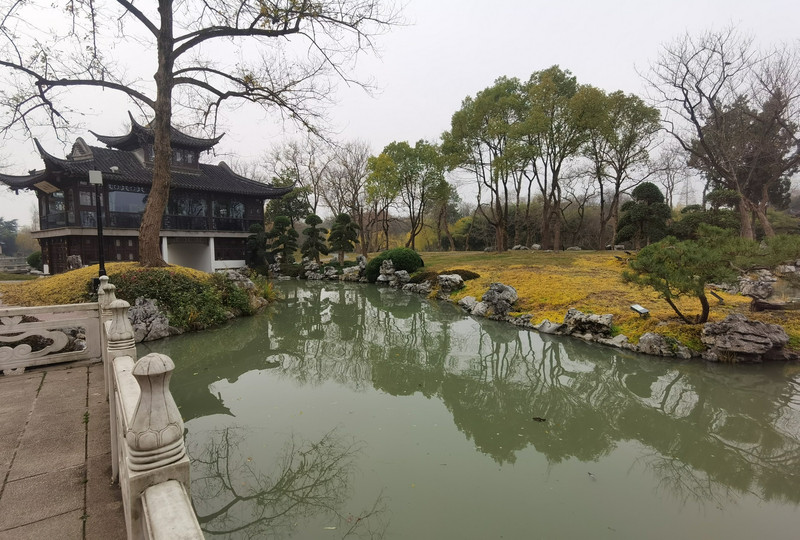



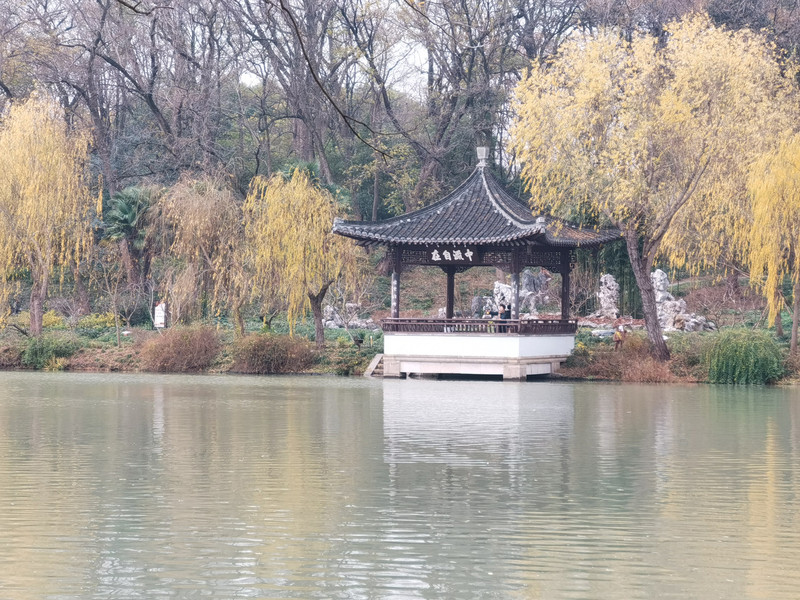
In Yangzhou, this kind of beverage cup (disposable) can be seen everywhere. The appearance should be the appearance of Qianlong, but I feel that it would be better if I used the appearance of Emperor Yang of the Sui Dynasty. After all, in my mind, the Manchu regime could not represent China, and Emperor Yang of the Sui Dynasty made more contributions to Yangzhou.

Yangzhou Double Expo Museum consists of Yangzhou Chinese Engraving Printing Museum and the new Yangzhou Museum. Block printing is known as a "living fossil" in the history of printing. Yangzhou is one of the birthplaces of block printing in China and the only city in China that maintains a complete set of ancient block printing techniques. However, this museum is really ordinary.
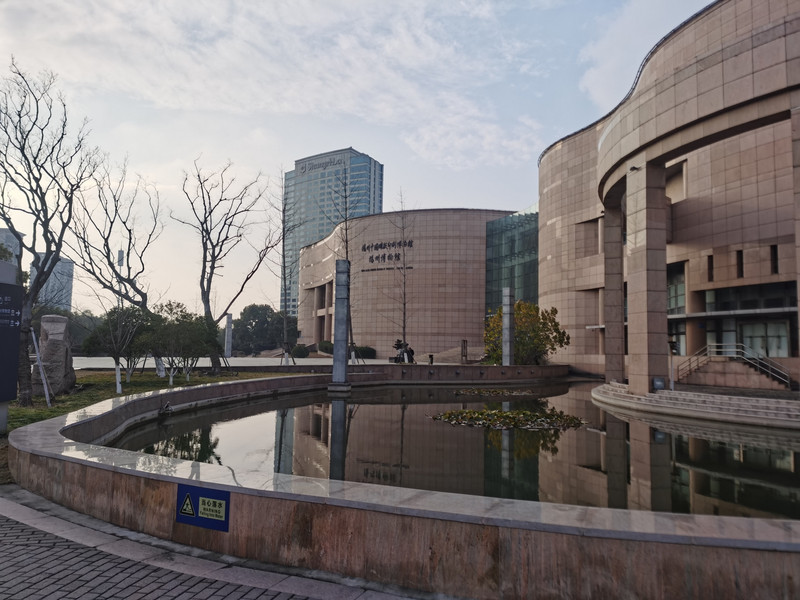
The treasure of the Yangzhou Museum is a Yuan Dynasty plum vase with blue glaze and white dragon pattern. Its height is 43.5 cm, its diameter is 5.5 cm, its largest abdominal diameter is 25cm, and its bottom diameter is 14cm. It is the largest and most completely preserved one of the three existing Yuan Dynasty plum bottles with white dragon pattern glaze. The other two are collected in the Summer Palace in Beijing and the Jimei Museum in Paris.

Clay sculptures of Yangzhou's three knives in the museum.




"Food is the most important food restaurant", which some people call Yangzhou's four major gourmet restaurants, became our place for dinner that day, but after eating, we were more disappointed and were much different from Lion Tower, regardless of the environment or taste.



I must say that Yangzhou Old Goose is really delicious. Since I live near Guandong Street, I bought the "Xie Ji" at the entrance, which is better than the "Goose Village Chief" across the street.

It was time to leave Yangzhou. On the morning of the fourth day, I ate pot stickers and cabbage noodles from Jiangjiaqiao Dumpling and Noodle Restaurant. The noodles were average, but the pot stickers tasted good.

Then I stole a glimpse of the breakfast at the table next door. Wow, what a good appetite, one person can eat so much!

On the way again, reminisce about the ancient city and the fragrant wintersweet






Previous Article:5-day tour of Zhenjiang and Yangzhou, Jiangsu
Next Article:Another way to teach my daughter ancient poetry, Fireworks March Tour in Jiangsu and Zhejiang
